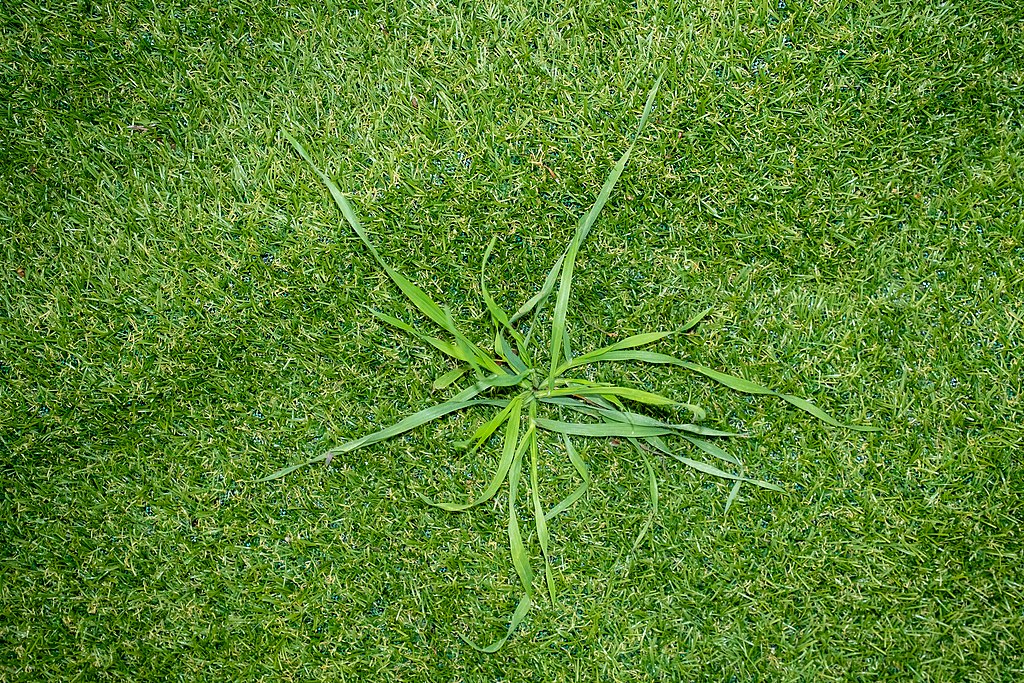
The lawn is a terribly British thing: Wimbledon, picnics, making daisy chains. For me summer starts when I’m hit by the scent of cut grass and then it’s that bit of green that remains into the winter months after the trees have lost their leaves. So why are so many gardens in the UK being covered in fake turf, and at what cost to the environment?
Artificial turf began in the 1960s as AstroTurf, created by Monsanto as a durable manmade sports surface that offered a ‘better playing experience’. Originally the US army had observed a differential in fitness levels between rural and urban recruits, and hoped that playing on pseudo-grass rather than concrete would improve performance among young urban men who lacked access to green spaces. In fact, AstroTurf was too expensive for small-scale city funding and instead found its market in larger sports venues.
As with any innovation, eventually the price came down and it became more accessible to the general public. And this is where we now find ourselves: an increasing number of gardens across the UK turfed with easy-care nylon weaves rather than nature-friendly grass.
The market for artificial turf is expected to grow by 6.5 per cent globally between 2022 and 2028. Although sports pitches remain the largest buyers, there is no let-up in the use for landscaping in private gardens and public outdoor spaces.
It certainly has some compelling selling points for the uninitiated: it’s low maintenance, it looks good all year round and crucially, in a world where water is increasingly precious, it doesn’t require watering.
The largest proportion of plastic garden turf is made from nylon. This accounts for 47 per cent of what is produced. Polypropylene accounts for 24 per cent, and 18 per cent is made from polyethylene. Each of these materials claims low-carbon production and re-cyclablility. However, there is a huge difference between a component being theoretically recyclable, and the availability of specialist facilities to do this.
So what’s actually so great about real grass? Well, plenty that makes it easy to bust the sales pitch for carpeting your garden with the fake stuff, dubbed ‘extinction carpet’ by one internet wag.
The archetypal clipped and striped English manor lawn may require a lot of maintenance, but attitudes have changed over recent years, with movements like No Mow May encouraging us to think about how grass supports insect life, and the desirability of allowing lawns to grow a bit wilder. Many have embraced the humble dandelion and love the bee-friendly yellow dots that appear amongst the green. Longer grass is a haven desperately needed by insects, ensuring the ecosystems that sustain our natural world can survive. Worms can’t permeate layers of nylon and polyethylene, but they thrive in the earth beneath a grass lawn, where they work their magic: improving soil quality, aiding drainage after heavy rain and providing food for birds, hedgehogs and frogs.
Grass grows easily and its cuttings are a staple of the compost bin, making it perhaps the easiest item in the garden to produce and recycle. Its plastic competitor, meanwhile, is manufactured miles away and needs cleaning, stripping and painstaking separation of its elements in order to recycle it – always supposing you can even locate a facility with the capability in the first place.
The reality is that most fake turf will not look so great after a few years, particularly if you have pets in your garden, and it will end up in landfill. Real grass, on the other hand, can be fed, tended, partially re-laid and brought back to better health.
The no-water-required advantage of fake grass is perhaps the most environmentally convincing argument in its favour, as we become subject to more frequent and longer hosepipe bans. However, plastic turf has its own issues as we confront climate extremes. Temperatures hit 30 degrees regularly in the UK, meaning that the fake grass can overheat, making it dangerous to step on barefoot, and painful for pets’ paws. Research from the University of Plymouth observes further that by displacing real plants, photosynthesis is prevented on a site which would otherwise be actively removing carbon dioxide from the environment. But we also suffer from increasing episodes of sudden heavy rainfall, and natural turf will always be better equipped to deal with the effects of rain than plastic, which may result in run-off further overwhelming drains, and washing plastic fibres out of your garden and into the wider environment.
Grass is wonderfully robust, ecologically important and a quintessential feature of our landscape. Fortunately, for the most part, the British public agrees that grass is important. Demand for the fake stuff appears to have peaked during lockdown, when so many turned their attention to household improvement projects, but a survey for My Builder in June 2023 showed that the backlash is underway. 57 per cent said they would never use artificial grass in their gardens and 24 per cent now think it should be banned outright. The tragedy is that the warnings were not heeded before this became a ‘middle of Lidl’ deal.
Choose biodiversity, choose photosynthesis, choose earthworms, choose thrushes, bluetits and dunnocks pecking at your lawn, choose composting. Choose grass and reject plastic!
You can help by signing the petition to ban the stuff! https://petition.parliament.uk/petitions/643435




